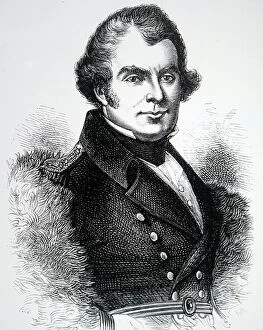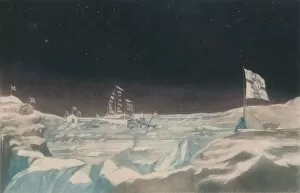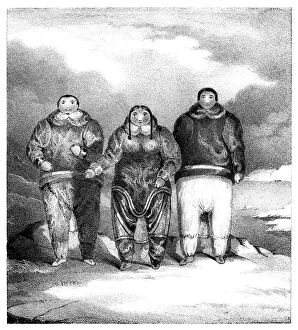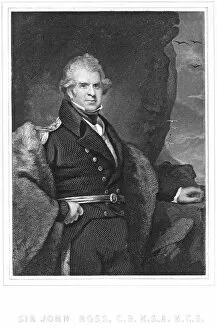Sir John Ross Collection
Sir John Ross, CB, KSA, KCS was a Scottish naval officer and explorer of the Arctic
All Professionally Made to Order for Quick Shipping
Sir John Ross, CB, KSA, KCS was a Scottish naval officer and explorer of the Arctic. His contributions to polar exploration are immortalized in various engravings and artworks from the early to mid-19th century. One such engraving depicts Sir John Ross himself, showcasing his distinguished appearance as a British polar explorer and naval officer. Another engraving captures the treacherous journey through ice that he undertook in June 1818, highlighting his bravery and determination. In addition to these depictions, there is an imaginary sketch by Sir John Ross himself of the North Pole, symbolizing his ambition to conquer uncharted territories. The artwork "Felix Harbour" by William Say showcases one of the breathtaking landscapes encountered during his expeditions. The striking "Crimson Cliffs" painting by Daniel Havell portrays the harsh yet captivating beauty of the Arctic landscape that fascinated Sir John Ross throughout his explorations. Not only did Sir John Ross leave behind visual representations of his adventures but also written accounts like "Passage Through the Ice, " which provides insight into his experiences during this perilous journey. These records were later transformed into colored aquatints for wider dissemination. The artistic talents extended beyond mere depictions of landscapes; they also encompassed cultural encounters with indigenous people like Poyettak, Kakikagiu, Aknalua - depicted in an artwork attributed to John Brandard - reflecting Sir John Ross's interactions with local communities during his expeditions. Admiral Sir John Ross's legacy as a British naval officer and Arctic explorer lives on through these historical engravings and artworks created decades after his endeavors took place. They serve as reminders not only of his personal achievements but also of humanity's enduring fascination with exploring unknown frontiers.














